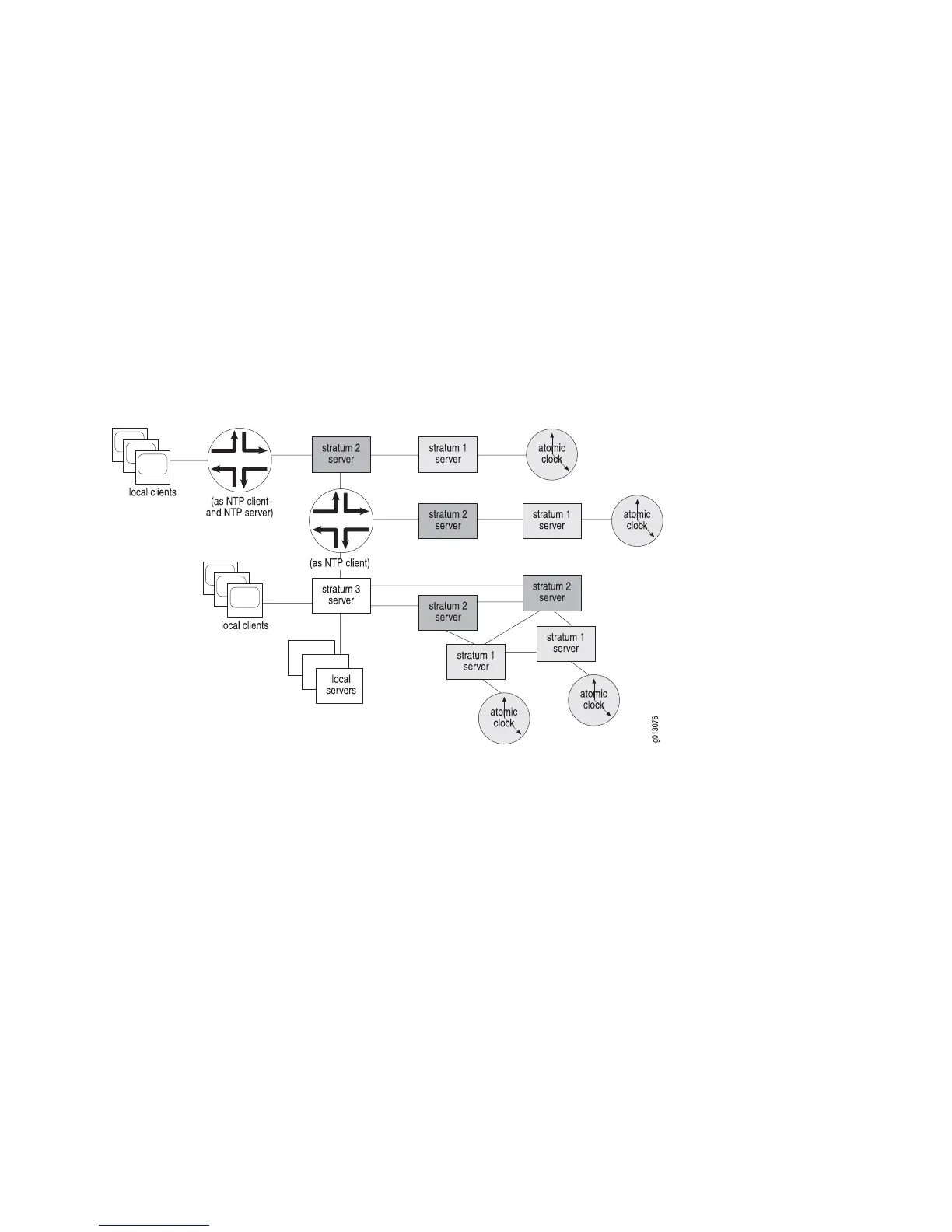To obtain high precision and reliability with NTP, clients typically synchronize with
several NTP servers at different physical locations. Peer associations, especially for
stratum 1 and 2 servers, provide redundancy for the network.
Hosts synchronize by exchanging NTP messages through UDP. NTP uses the IP and
UDP checksums to confirm data integrity.
By default, the router is an NTP client. You must configure NTP client parameters to
start NTP client operation. You can also configure the router as an NTP server, whether
or not you configure NTP client parameters.
Figure 27 on page 522 shows an example of an NTP hierarchy.
Figure 27: Example of an NTP Hierarchy
System Operation as an NTP Client
To synchronize to the clock of a server, the system must receive time information
from NTP servers recurrently. The way the system receives such information depends
on how you configure it:
■ If you configure the system to poll NTP servers, it sends time requests to the
servers periodically. NTP servers receive the requests, add time information to
the messages, and send replies to the system.
■ If you configure the system as a broadcast client, it receives NTP broadcasts
from servers periodically. The broadcasts include time information from the
servers.
By default, NTP servers respond to the interface from which an NTP request
originated. You can direct responses from all NTP servers to one interface on the
system, or from a specific NTP server to a specific interface.
522 ■ Overview
JUNOSe 11.1.x System Basics Configuration Guide

